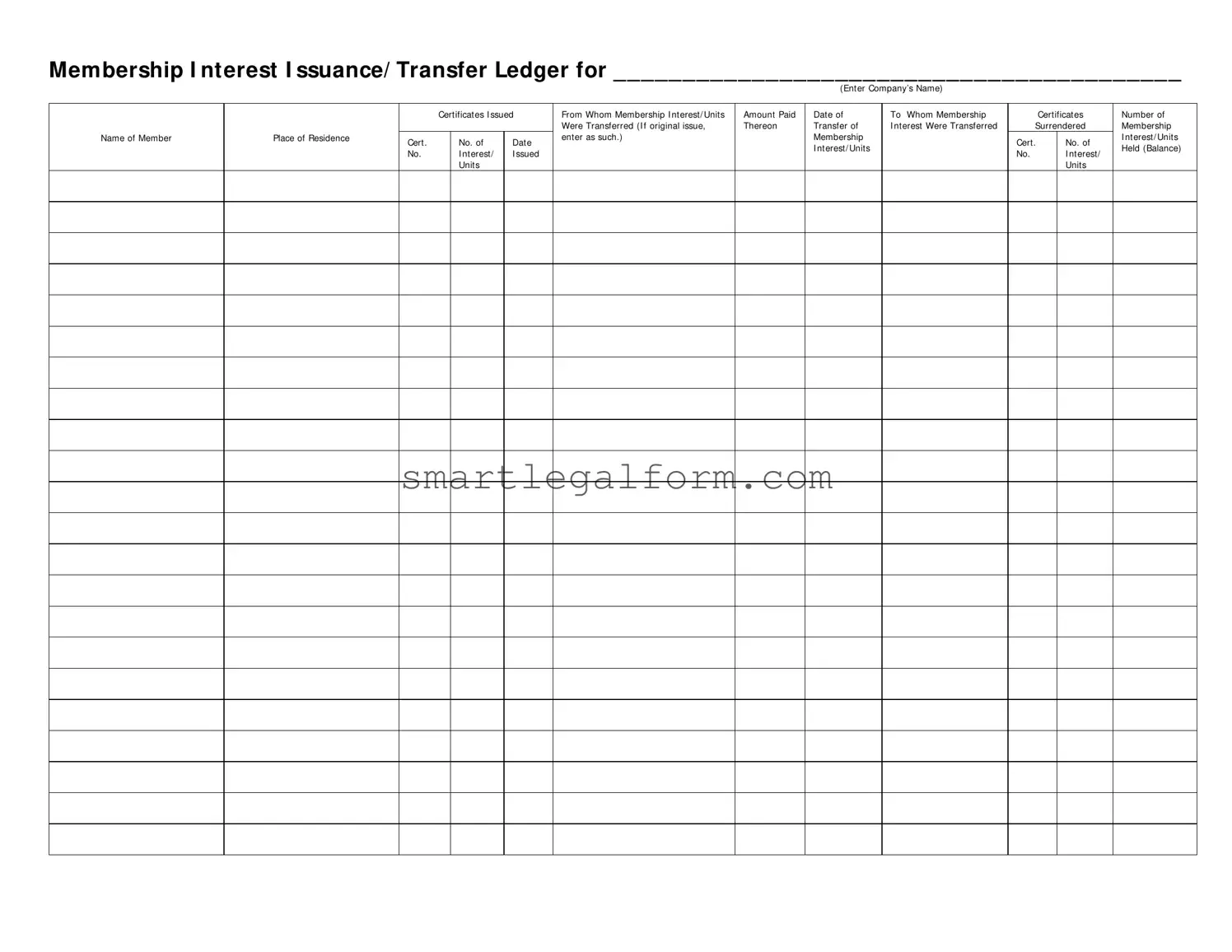Free Membership Ledger Form
The Membership Ledger form serves as a crucial document for tracking the issuance and transfer of membership interests within a company. It provides a detailed record of who holds membership units, the amounts paid, and the dates of any transfers. Ensuring accurate completion of this form is vital for maintaining clear ownership records and facilitating smooth transitions of membership interests.
To get started, please fill out the Membership Ledger form by clicking the button below.
Fill Out Your Form Online

